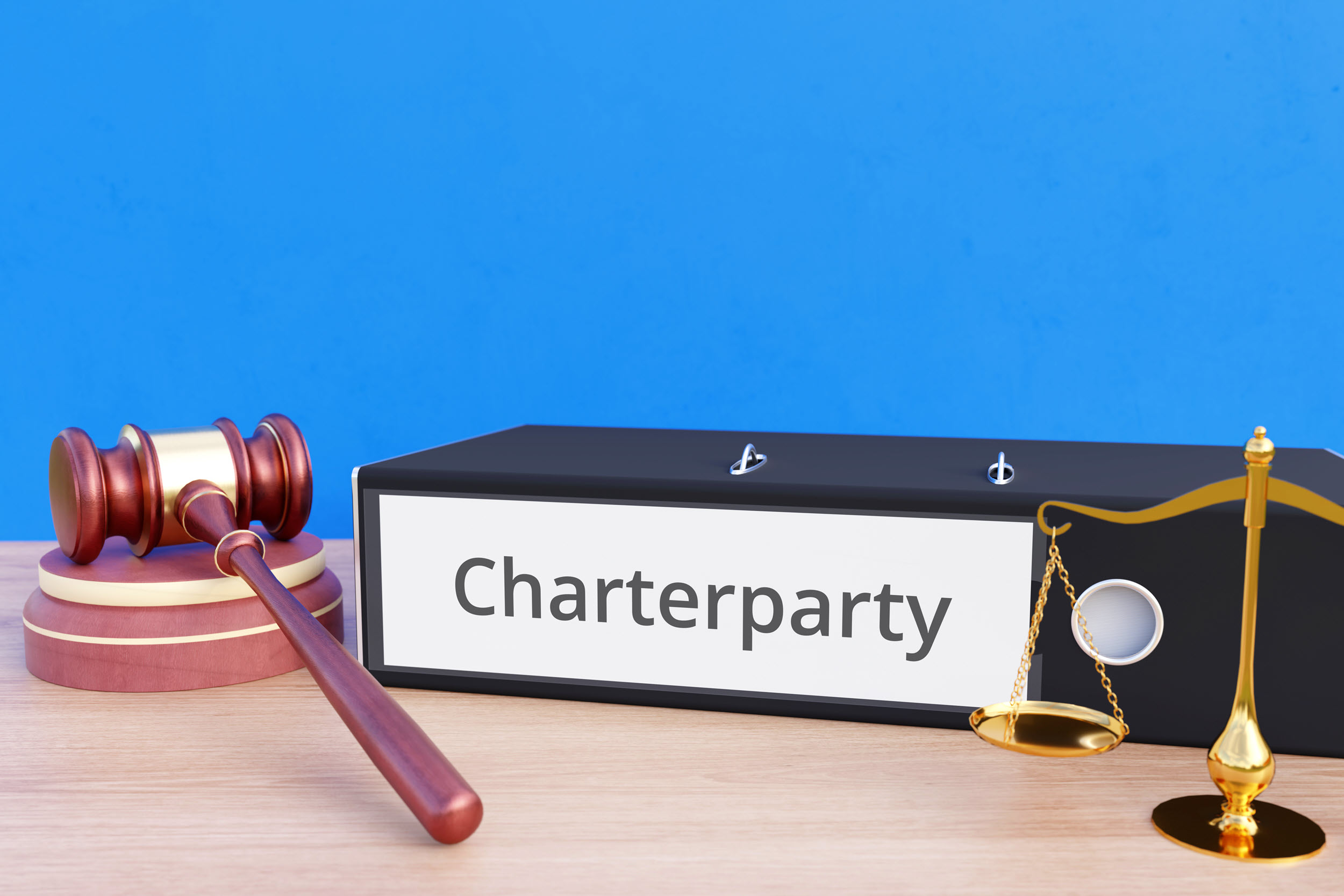

What is a Charterparty?
A Charterparty stands as a pivotal legal contract within maritime law, specifically designed to outline the terms and conditions between the shipowner and the charterer. This contract is fundamental in the shipping industry as it governs the rental and operational conditions of a vessel. The essence of a Charterparty is to ensure a mutual understanding and agreement on aspects such as the duration of the charter, the specific cargo to be transported, the route to be taken, and the financial terms including payment and hire rates.
The Charterparty serves as a cornerstone in maritime operations, facilitating the smooth execution of shipping transactions. It allows for the customization of terms to suit the diverse needs of the parties involved, ranging from time charters and voyage charters to bareboat charters, each with its unique set of conditions and responsibilities. This adaptability ensures that the Charterparty can accommodate various types of cargo and shipping requirements, making it an indispensable tool in the global trade network.
Understanding the intricacies of a Charterparty is crucial for anyone involved in maritime commerce. It not only provides a legal framework for resolving disputes but also sets the stage for efficient and effective shipping operations. By clearly defining the rights and obligations of each party, a Charterparty minimizes the risks associated with maritime transport, ensuring that goods reach their destination safely and on time.
Why are Charterparties Necessary in Maritime Trade?
Charterparties act as a detailed agreement that outlines every aspect of the shipping process, from the duration of the charter and the cargo specifics to the route and financial arrangements.
This clarity is essential in minimizing misunderstandings and disputes, ensuring that goods are transported efficiently across the globe. Furthermore, Charterparties enable shipping companies to plan their logistics with greater precision, supporting the global economy by ensuring the steady flow of trade.
They ensure clear terms for the use of a vessel.
For instance, a Charterparty agreement between a major shipping company and a commodities trader clearly outlined the terms for transporting a bulk cargo of grain from North America to Asia. The detailed provisions regarding loading times, cargo handling, and demurrage charges helped prevent potential disputes and facilitated a timely and efficient delivery, showcasing the importance of clear terms in maritime operations.
They mitigate risks associated with sea transportation.
A study revealed that Charterparties significantly reduce the incidence of cargo damage claims by up to 30%, highlighting their role in risk mitigation. By specifying the standards for cargo handling and the responsibilities in case of damage or loss, these agreements provide a safety net for both shipowners and charterers, enhancing the overall security of sea transportation.
They facilitate international trade by standardizing shipping transactions.
The standardization of shipping transactions through Charterparties has been instrumental in the growth of international trade, particularly in the oil industry. For example, the use of standardized Charterparty forms in crude oil shipping has streamlined operations, reduced administrative burdens, and facilitated the smooth flow of trade across key routes such as the Middle East to Asia and North America to Europe. This efficiency is crucial for the energy sector and the global economy at large, underscoring the indispensable role of Charterparties in maritime commerce.
Types of Charterparties
Charterparties are categorized into three main types, each tailored to meet specific needs within the maritime industry. Time Charter, Voyage Charter, and Bareboat Charter are the primary forms, each offering unique benefits and posing distinct challenges. This section will delve into real-life applications of each type and provide a comparative analysis to illustrate their prevalence and advantages in various shipping contexts or markets.
Time Charter: Vessel rented for a specific period.
In a Time Charter, the charterer secures the vessel for a designated duration, enabling the use of the ship for multiple voyages. This flexibility is particularly beneficial for companies with variable shipping needs. For example, a global trading company might use a time charter to transport different commodities based on seasonal demand, ensuring cargo space without the long-term commitment of owning a vessel.
Voyage Charter: Vessel hired for a single journey.
Voyage Charter is chosen for its straightforwardness, where the shipowner is responsible for voyage costs. A notable example includes the transportation of a single, large shipment of crude oil from the Middle East to refineries in Asia. This type of charter is preferred for its simplicity and cost-effectiveness for one-off or infrequent shipments.
Bareboat Charter: Charterer controls the vessel entirely.
With a Bareboat Charter, the charterer has full control over the vessel, including its operation and crewing. This arrangement is akin to leasing and is exemplified by a shipping company expanding its fleet temporarily to meet a surge in demand without the capital expenditure of purchasing new ships. It offers maximum flexibility but requires the charterer to have operational expertise.
Comparative Analysis of Charterparty Types
The following table provides a detailed comparison of the three main types of Charterparties, highlighting their key features, benefits, challenges, and typical use cases in the maritime industry.
| Charterparty Type | Key Features | Benefits | Challenges | Typical Use Cases |
| Time Charter | Vessel rented for a specific period. | Flexibility in cargo and destinations. Allows for multiple voyages. | Cost variability with market fluctuations. Requires careful operational planning. | Companies with variable shipping needs, such as seasonal commodities. |
| Voyage Charter | Vessel hired for a single journey. Shipowner bears voyage costs. | Cost-effective for one-off shipments. Straightforward agreement. | Limited flexibility. The charterer has little control over operational aspects. | Single, large shipments like crude oil or bulk commodities. |
| Bareboat Charter | Charterer has full control over the vessel and its operations. | Maximum operational control. Flexibility in crewing and management. | Requires significant operational expertise. Higher risk for the charterer. | Expanding fleet capacity temporarily or for companies with specific operational capabilities. |
This comparative analysis, supplemented with real-life examples and case studies, illustrates the strategic considerations businesses must undertake when selecting the most appropriate Charterparty. Each type serves distinct operational and logistical needs, making the selection process critical to the success of maritime ventures.
Execution of a Charterparty
The execution of a Charterparty is a critical phase that demands meticulous attention to detail and clear communication between the parties involved. It begins with initial discussions to assess the vessel’s suitability for the charterer’s needs, ensuring that the ship can adequately meet the requirements for the intended cargo and journey. This step is foundational, setting the stage for a successful partnership by aligning expectations from the outset.
Following these preliminary evaluations, the process advances to detailed negotiations on rates, routes, and specific responsibilities. This stage is where the intricacies of the agreement are hashed out, including hire rates, voyage routes, and the division of operational responsibilities. It’s a phase characterized by its complexity, requiring both parties to articulate their needs and expectations clearly to avoid future disputes.
The negotiation phase is crucial for establishing a mutual understanding and setting clear terms for the charter, which can significantly reduce the potential for misunderstandings. The culmination of this process is the signing of the contract, a formal act that solidifies the agreement into a legally binding document. This step often involves legal witnesses to ensure the validity of the contract and to affirm that both parties fully understand and agree to the terms laid out.
The signing marks the official commencement of the Charterparty, dictating the operational and financial relationship between the shipowner and the charterer for the duration of the charter.
Initial discussions on terms and vessel suitability.
The journey begins with initial discussions that delve into the specifics of the charterer’s requirements and evaluate the vessel’s capability to fulfill these needs. This stage is crucial for ensuring that the ship is a good fit for the intended cargo and voyage, laying the groundwork for a successful charter agreement. It’s a time for open dialogue, where potential issues can be identified and addressed early in the process, setting a positive tone for the negotiations that follow.
Detailed negotiations on rates, routes, and responsibilities.
Detailed negotiations follow, where the focus shifts to the finer points of the agreement, such as hire rates, voyage routes, and the specific responsibilities of each party. This phase is marked by its intensity, with both sides working to secure terms that meet their operational and financial objectives. It’s a critical period where clear communication and compromise are key to forging an agreement that is satisfactory to both the shipowner and the charterer.
Successful negotiations hinge on each party’s ability to articulate their needs while remaining open to compromise, ensuring that the final agreement reflects a balanced approach to the charter’s terms.
Signing of the contract, often with legal witnesses.
The signing of the contract is the definitive step that transforms the Charterparty from a tentative agreement into a legally binding document. This phase often involves legal witnesses to ensure the contract’s validity and to confirm that both parties fully comprehend and consent to the terms agreed upon. The act of signing is a significant milestone, marking the beginning of the charter and establishing the legal framework that will govern the relationship between the shipowner and the charterer throughout the duration of the charter.
It’s a moment that underscores the importance of the Charterparty in maritime operations, cementing the commitments made by both parties and setting the stage for the successful execution of the charter agreement.
Common disputes in Charterparties
In the realm of maritime trade, Charterparties frequently encounter disputes that arise from various facets of the agreement. Freight rate disagreements are a prevalent issue, often triggered by market fluctuations that impact shipping costs. These variations can lead to conflicts over the rates initially agreed upon between the shipowner and the charterer.
For example, a sudden surge in fuel prices may increase operational costs, leading to disputes over who should bear the additional expenses. Resolutions often involve renegotiation of terms or arbitration to reach a fair adjustment of rates. Cargo claims, pertaining to the quality, quantity, or damage of the cargo, also frequently lead to disputes, as parties may hold differing opinions on the condition or handling of the goods.
A notable instance could involve a charterer disputing the condition of received goods, claiming they were damaged in transit due to improper handling by the crew. Such disputes are commonly resolved through insurance claims or arbitration, depending on the terms outlined in the Charterparty. Moreover, operational disputes regarding the vessel’s readiness and delays are common, where there’s a mismatch between the expected and actual performance of the vessel, causing friction between the involved parties.
An example could be a charterer expecting a vessel to be ready for loading by a certain date, but maintenance issues delay the vessel’s availability. These disputes might be resolved through compensation for the delay or adjustments to the charter period. Recent trends indicate that disputes related to environmental regulations and compliance, such as emissions standards, are becoming more common, reflecting the shipping industry’s evolving challenges.
These disputes highlight the critical need for clear terms and a mutual understanding in Charterparty agreements to minimize conflicts and ensure seamless maritime operations.
Freight rate disagreements due to market fluctuations.
Freight rate disagreements frequently arise when unexpected market fluctuations affect the cost of shipping. These shifts can lead to disputes between shipowners and charterers regarding the freight rates initially agreed upon, highlighting the unpredictable nature of the shipping market and the necessity for contracts that can adapt to changing conditions. For instance, a significant drop in global oil prices might lead a charterer to seek a reduction in the previously agreed freight rates, arguing that the shipowner’s operational costs have decreased.
Cargo claims related to quality, quantity, or damage.
Disputes over cargo claims are common in charter agreements and typically revolve around the cargo’s quality, quantity, or damage. Differences in what was expected versus what was delivered can lead to significant conflicts, underscoring the critical importance of having detailed cargo specifications and condition documentation as part of the charter agreement. A dispute might arise if a cargo’s weight upon arrival at the destination port is significantly less than documented at the loading port, suggesting possible discrepancies during transit.
Operational disputes over vessel readiness and delays.
Operational disputes often occur due to disagreements on the vessel’s readiness for a voyage or delays in shipping operations. These disputes can originate from mismatched expectations about the vessel’s condition or performance, causing tension between the shipowner and the charterer. Such issues highlight the vital need for explicit communication and agreement on vessel standards and operational timelines.
An operational dispute may involve a vessel being deemed unseaworthy close to the loading date, leading to urgent negotiations or legal actions to address the charterer’s potential losses.
Resolving Charterparty disputes
Resolving disputes arising from Charterparty agreements often involves structured approaches designed to efficiently address and settle conflicts. Arbitration, mediation, and litigation are the primary methods employed, each with its distinct processes and outcomes. The choice of method depends on the specifics of the dispute, the contract terms, and the parties’ preferences.
Arbitration in a pre-agreed upon location and manner.
Arbitration is a preferred method for its efficiency and confidentiality. It involves a neutral arbitrator making a binding decision based on the evidence and arguments presented by both sides. The process and location for arbitration are typically outlined in the Charterparty contract.
Mediation by a neutral third party to find a settlement.
Mediation involves a neutral mediator who helps the disputing parties find a mutually satisfactory solution through negotiation and compromise. This method is valued for its ability to preserve business relationships by fostering a collaborative resolution process.
Litigation in courts, typically in a jurisdiction agreed upon in the contract.
Litigation is a formal process where the dispute is presented in court, and a judge makes a binding decision. This method is usually pursued when other resolution avenues fail and is considered more time-consuming and costly.
Comparative Analysis of Dispute Resolution Methods
The following table provides a detailed comparison of arbitration, mediation, and litigation as methods for resolving Charterparty disputes, highlighting key aspects such as effectiveness, cost, and duration.
| Resolution Method | Effectiveness | Cost | Duration | Key Factors |
| Arbitration | High | Moderate to High | Short to Medium | Binding decision; confidentiality; pre-agreed upon location and manner. |
| Mediation | Variable | Low to Moderate | Short | Non-binding; preserves business relationships; collaborative process. |
| Litigation | High | High | Long | Formal court process; binding decision; jurisdiction often pre-determined in the contract. |
Case Studies or Examples:
- Arbitration Case Study: A dispute over freight rates due to market fluctuations was successfully resolved through arbitration. The neutral arbitrator’s decision was based on the contract terms and current market conditions, leading to a fair resolution within three months.
- Mediation Example: A cargo claim dispute involving damaged goods was settled through mediation. The mediator facilitated a compromise where the shipowner agreed to compensate part of the loss, preserving the business relationship.
- Litigation Outcome: An operational dispute over vessel readiness led to litigation. The court process took over a year but ultimately enforced the contract terms, holding the shipowner responsible for delays.
This comparative analysis and the examples provided illustrate the considerations parties must weigh when choosing a dispute resolution method for Charterparty conflicts.
Impact of Charterparties on global shipping
Charterparties significantly influence the global shipping industry by establishing a structured framework that enhances the efficiency and reliability of maritime trade. By providing clear terms and standardized agreements, Charterparties ensure predictable shipping costs, crucial for financial planning and stability in the dynamic realm of international commerce. Moreover, these contracts enable shipping companies to plan their logistics and operations with greater precision, optimizing the global movement of goods.
The contribution of Charterparties to the growth of international trade is underscored by data indicating a steady increase in the volume of goods transported under such agreements, with projections suggesting a continued upward trend as global trade expands. This meticulous organization and predictability foster smooth and efficient trade flows, highlighting the indispensable role of Charterparties in bridging markets and facilitating commerce on an international scale.
Related posts


LNG Tanker Valuation: What Influences the Sale Price?

Buy and Sell Offshore Vessels






